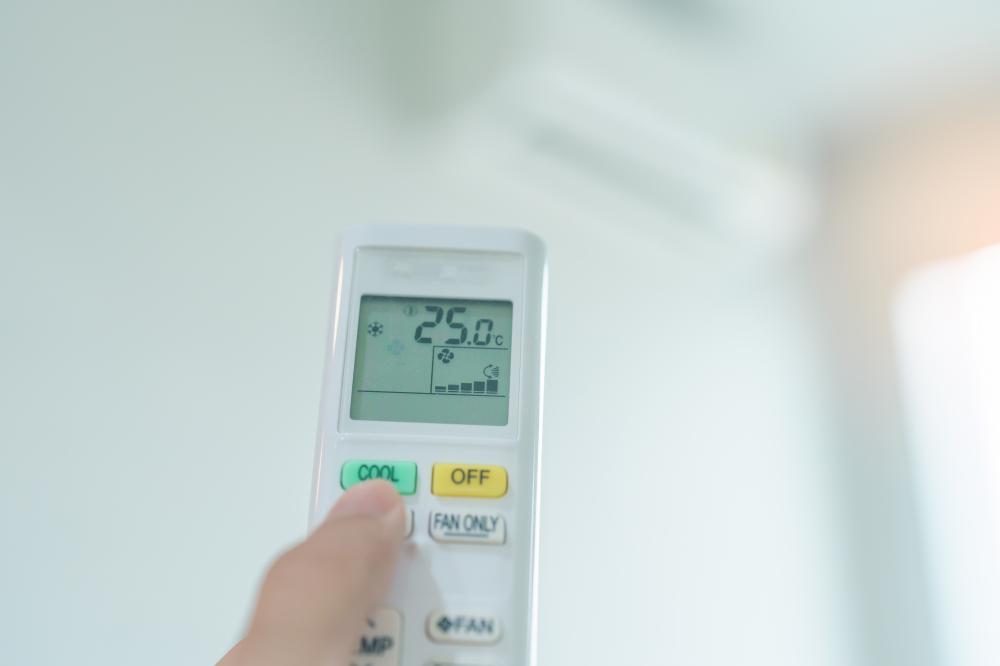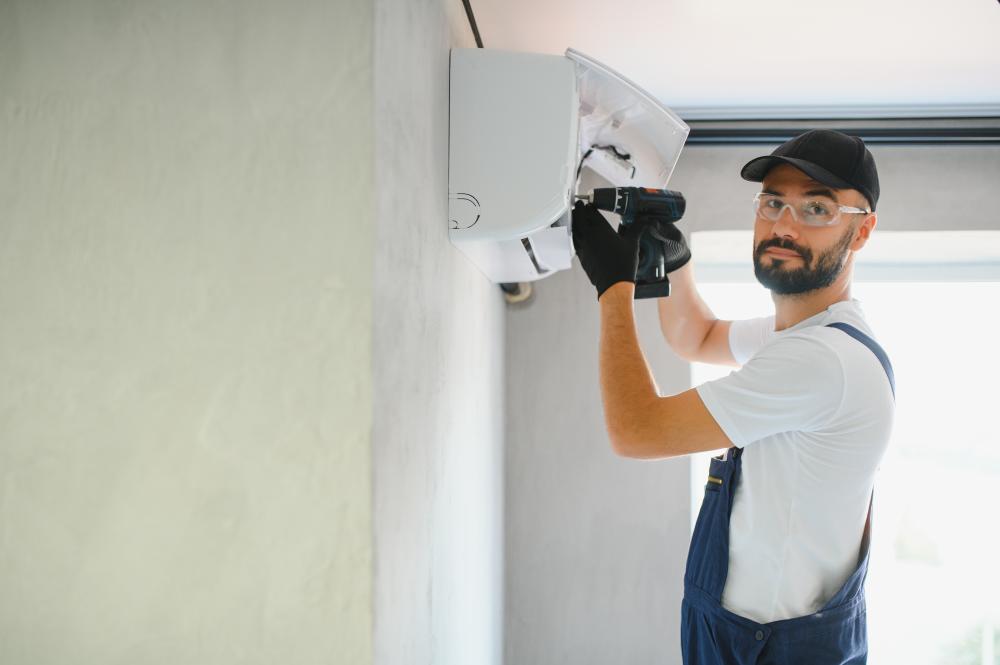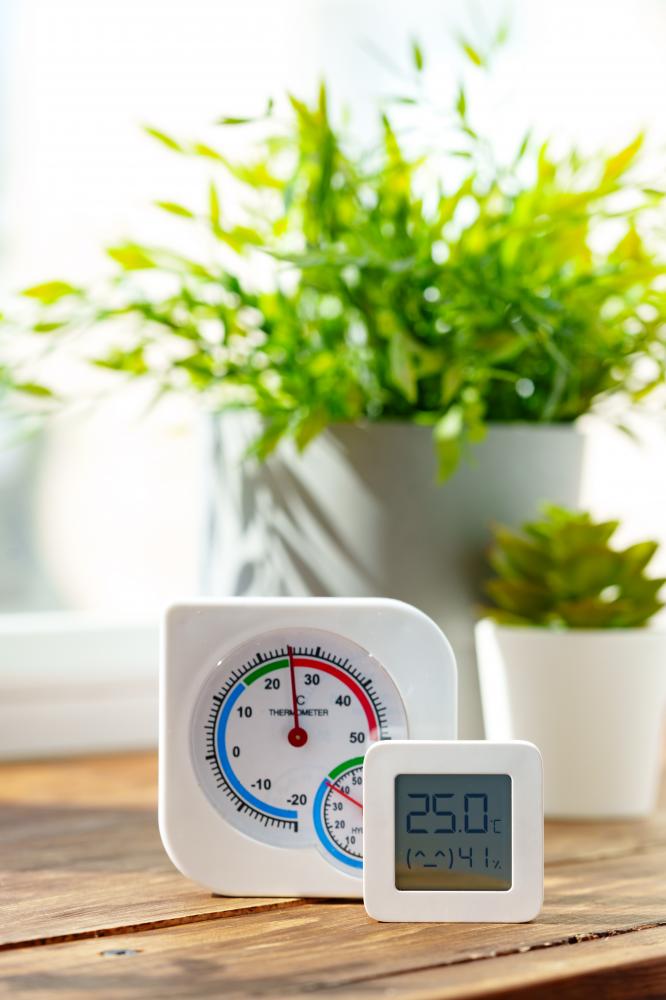
Maintaining Your AC
At San Fernando Valley HVAC, we understand that keeping your air conditioner in top shape is crucial. One of the best ways to ensure efficiency is by changing your air filter regularly. A clogged filter makes the unit work harder, consuming more energy. It's wise to check and replace filters every month during the summer.
Scheduling routine maintenance with a professional can also prevent unexpected breakdowns. Our technicians are trained to identify and fix potential issues before they become costly problems. Regular maintenance not only keeps your unit functioning smoothly but also extends its lifespan.
Optimizing Thermostat Settings
Adjusting your thermostat can significantly improve AC efficiency. Setting it to a moderate temperature reduces the risk of overworking the system. Consistency is key. Avoid drastic temperature changes that can lead to increased energy use.
Consider installing a programmable thermostat. It allows you to set specific temperatures for different times of the day. This ensures that your system isn't running unnecessarily while you're away. Our team can help you choose and install a model that fits your lifestyle.
Placing your thermostat in the right location is also crucial. Keep it away from heat sources like appliances or direct sunlight. This ensures it reads the correct ambient temperature and cools your home efficiently.
Utilizing Natural Cooling Methods
Maximizing air conditioner efficiency during summer doesn't always require high-tech solutions. You can make simple adjustments at home to keep your space cooler naturally. For example, using ceiling fans helps circulate air efficiently. They reduce the need for constant AC use, allowing you to set the thermostat a few degrees higher.
Embracing natural shade, like trees and awnings, can lower indoor temperatures significantly. This reduces the strain on your air conditioning system. Drawing blinds or curtains during peak sunlight hours also keeps excess heat out. These small changes can greatly enhance your home's comfort.
Keeping Your AC Clean
Maintaining a clean air conditioner is vital for optimizing efficiency. Start by ensuring the area around your outdoor unit is free from debris and plants. This improves airflow, allowing your unit to cool efficiently. Regularly check and clean the coils to prevent dirt accumulation, which can restrict airflow.
Don't overlook the condenser unit. Disconnect the power and clean it periodically. Remove any dust or leaves that may have gathered over time. A clean condenser operates more efficiently, reducing energy costs.
Vents and ducts should also be clear of obstructions. Closing off vents increases pressure and diminishes efficiency. Our technicians are equipped to inspect and clean air ducts, ensuring optimal performance.
Considering Insulation Upgrades
Insulation plays a crucial role in How to Maximize Air Conditioner Efficiency During Summer. It prevents cool air from escaping, thereby reducing the workload on your AC. Inspect your home's insulation, especially around windows and doors. If you notice any drafts, seal them promptly.
Adding insulation to air ducts is another effective strategy. It ensures cool air reaches your rooms without loss. Proper insulation keeps your cooling costs down and improves your system's performance.
Our team can assess your current insulation and suggest upgrades where needed. With the right insulation, you can maintain a consistently comfortable environment inside your home.

Maintaining Your Thermostat
One of the simplest Tips for Improving AC Efficiency involves maintaining a consistent thermostat setting. Constantly adjusting the thermostat can lead to inefficiency and increased energy bills. It’s best to set your thermostat at a comfortable temperature and leave it there. A setting around 78 degrees Fahrenheit is recommended for when you are home. This balance keeps your living space comfortable while saving energy.
When you’re away, raising the thermostat setting can lead to further savings. Set it about 7 to 10 degrees higher than usual if you’re gone for long periods. Consider installing a programmable thermostat, which allows you to set temperatures based on your schedule. This small investment can make a noticeable impact on your energy consumption and costs.
The Role of Ventilation
Airflow is crucial in maintaining AC efficiency. Blocked or dirty vents limit this airflow, making your system work harder than necessary. To prevent this, regularly check that your vents are clean and unblocked. Dust and debris accumulate quickly, so periodic cleaning is essential to keeping your system performing optimally.
Fans can also play a role in enhancing air circulation. Ceiling fans, for instance, create a cooling effect that allows you to set the thermostat a few degrees higher. Just ensure that ceiling fan blades are rotating counterclockwise in the summer to push air down, adding to the room’s comfort without adding much to energy use.
Insulating and Sealing Ductwork
Ensuring your ductwork is properly sealed and insulated is another critical factor in our Tips for Improving AC Efficiency. Leaky ducts allow conditioned air to escape, reducing overall system efficiency. In homes with unconditioned spaces like attics, this issue can be particularly problematic.
Professional inspection and insulation of ductwork can reduce energy waste significantly. By sealing leaks and adding insulation, your HVAC system can deliver cool air more effectively throughout your home. This can lead not only to improved efficiency but also to enhanced indoor air quality by minimizing potential exposure to contaminants.
The Impact of Shading and Location
Shade around your AC unit can greatly enhance its efficiency. An outdoor unit exposed to direct sunlight works much harder to cool your home. Placing your unit in a shaded area or providing artificial shading can lead to improved performance and energy savings.
Consider strategic landscaping as a natural way to create shade. Planting trees or shrubs nearby can make a big difference. Just be cautious not to block airflow around the unit with excessive vegetation. This approach combines effective cooling with environmental benefits, as plants can provide natural air purification.
Thoughtful Usage of Appliances
Household appliances can inadvertently increase your AC’s workload. Using ovens, stoves, or dryers during the hottest parts of the day can add heat to your home, forcing your AC to work harder. By altering this habit and using such appliances in cooler hours, you can reduce the cooling load.
Another practical tip is sealing windows and doors to prevent cool air from escaping. Even small leaks can have a significant impact over time. Using weather stripping can help reduce these losses and make your AC system operate more effectively. These simple Tips for Improving AC Efficiency can collectively create an energy-efficient and cost-effective home environment.
Optimize HVAC Efficiency
Keeping comfortable during the summer months in San Fernando Valley can be challenging. A key strategy in Summer Energy Saving Techniques is ensuring your HVAC system runs smoothly. Regular maintenance is vital. It enhances efficiency and extends the system's lifespan. We recommend scheduling an annual check-up with one of our certified technicians to catch potential issues early.
An efficiently running HVAC system consumes less energy. Start by cleaning or replacing filters regularly. This reduces the system's workload. Pay attention to strange sounds or smells. They might indicate a need for professional attention. Overlooking these signs can lead to more expensive repairs later.
Strategic Use of Fans
Ceiling fans are a fantastic complement to your air conditioning. In summer, ensure your fans rotate counterclockwise. This creates a cool breeze. Fans are effective energy savers when used wisely. Turn them off when you leave a room. Remember, fans cool people, not spaces.
Position portable fans strategically for cross-ventilation. Placing them near windows draws in cooler air. This technique can reduce your AC dependency. Ceiling fans and portable fans together can create a comfortable environment while keeping energy costs down.
Invest in ENERGY STAR-certified fans. These models offer greater efficiency. Incorporating fans is among the most cost-effective Summer Energy Saving Techniques.
Smart Thermostats and Temperature Control
Utilizing a smart thermostat is an innovative part of Summer Energy Saving Techniques. These devices allow for precise temperature control. Program them to adjust temperatures automatically. Raising the temperature slightly when you're out can result in significant savings. Lower it to comfort levels just before you return home.
Consider eco modes on these thermostats. They provide optimal efficiency without sacrificing comfort. This technology helps maintain a harmonious balance. It aligns energy savings with personal comfort. Over time, these small changes accumulate substantial savings on energy bills.
Insulation and Sealing
Quality insulation is crucial for reducing energy costs. Proper insulation minimizes the impact of outdoor temperatures on indoor comfort. Ensure that your home is adequately insulated. Pay special attention to the attic. Insulating this area can greatly affect overall energy consumption.
Seal cracks and gaps around windows and doors. Doing so prevents cool air from escaping. Weather stripping and caulking are effective solutions. Implementing these techniques not only cuts energy costs but also enhances indoor comfort. Improved insulation is a sensible investment with long-term benefits.
Incorporating these Summer Energy Saving Techniques can result in noticeable improvements. They contribute to a comfortable living environment and reduce energy expenses.
Harnessing Natural Light
Maximizing natural light in your home reduces reliance on artificial lighting. This practice is an important element of Summer Energy Saving Techniques. Open curtains or blinds during the day to let sunlight illuminate your space. Place reflective surfaces near windows to bounce light into darker areas.
However, avoid direct sunlight in the hottest parts of the day. Use window treatments like blinds or shades to block heat. This simple adjustment can mitigate the need for excessive cooling. It keeps your home cooler naturally while conserving energy.

What is the most efficient way to run the AC during the summer?
At San Fernando Valley HVAC, we've discovered that the key to maximizing air conditioner efficiency is balance and consistency. Setting your thermostat to a moderate temperature, like 78 degrees Fahrenheit, when you're home is generally advised. This strikes a balance between comfort and energy savings. When you leave home, raise the temperature by about 7 to 10 degrees. Using a programmable or smart thermostat can make these adjustments seamless, allowing the system to adapt to your schedule without manual input. Regular maintenance, including changing air filters and cleaning coils, ensures the system runs efficiently without unnecessary strain.
Is 72 too cold for AC in summer?
Setting your AC to 72 degrees might feel pleasantly cool, but it can increase your energy consumption significantly, especially in the summer when outdoor temperatures soar. At San Fernando Valley HVAC, we advise our clients to aim for a setting closer to 78 degrees when you're at home. Every degree above 72 can reduce your energy bill by up to 3%, according to the Department of Energy. If you feel 78 is too warm, consider supplementing with ceiling fans to enhance comfort. Fans create a wind-chill effect, allowing you to feel cooler without lowering the AC temperature.
Is it cheaper to leave the air conditioner on all day in summer?
This is a common question we encounter at San Fernando Valley HVAC, and the short answer is no; it is generally not cheaper to leave your AC running all day. Instead, allowing the system to rest when you're not home saves energy and reduces wear. Programmable thermostats can be your best friend here. Set them to raise the temperature when you're away and cool down shortly before you return. This approach maintains comfort while optimizing efficiency. Remember, each home is different, so it's crucial to find a balance that suits your lifestyle and climate conditions.
How cool should my house be if it's 100 outside?
When the thermometer hits triple digits, keeping your indoor environment comfortable can be challenging. At San Fernando Valley HVAC, we suggest aiming for a temperature around 78 to 80 degrees inside. This is considerably cooler than the outside and should be comfortable for most people. Using fans can help you feel cooler without needing to lower the AC temperature further. It's important to note that every degree below 78 can increase energy usage by up to 5%, so keeping a balance is crucial for cost and efficiency.
Can poor ventilation affect my AC's efficiency during summer?
Absolutely. At San Fernando Valley HVAC, we often emphasize that ventilation plays a significant role in AC efficiency. Blocked or dirty vents impede airflow, forcing your AC to work harder. This not only increases energy consumption but can also lead to wear and tear over time. We recommend regularly checking and cleaning vents, ensuring they are clear of obstructions. Strategic use of ceiling fans can also improve air circulation, making your home feel cooler even if the AC thermostat is set a bit higher. Proper ventilation helps maintain a comfortable home while optimizing your AC's performance.
#### Resources for Optimizing Air Conditioner Efficiency During SummerResources
- Department of Energy – Offers guidelines and tips on energy efficiency, including best practices for air conditioning systems and temperature settings for optimal energy savings.
- Environmental Protection Agency – Provides resources on energy conservation, including the importance of proper ventilation and maintenance for HVAC systems.
- Energy Trust of Oregon – Focuses on energy-saving techniques and offers information on how to improve cooling efficiency in homes and businesses.
- ASHRAE (American Society of Heating, Refrigerating and Air-Conditioning Engineers) – Offers technical guidelines and standards for maintaining efficient and effective HVAC systems, including insights on insulation and sealing.
- Natural Resources Canada – Provides information on energy-efficient home improvements, including guidance on HVAC systems and insulation upgrades.
- ENERGY STAR – A trusted program that offers information about energy-efficient products, including smart thermostats and energy-saving techniques specific to HVAC systems.
